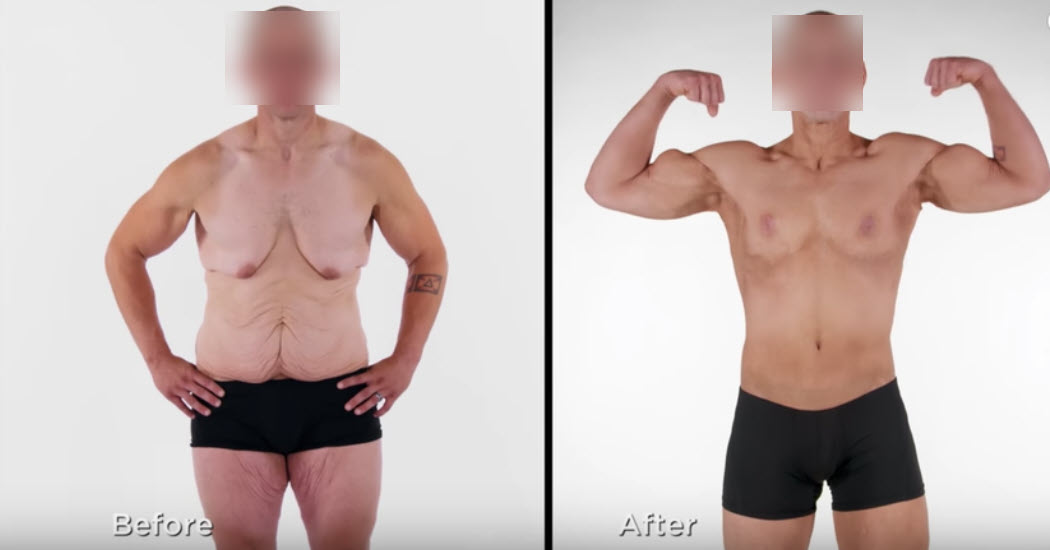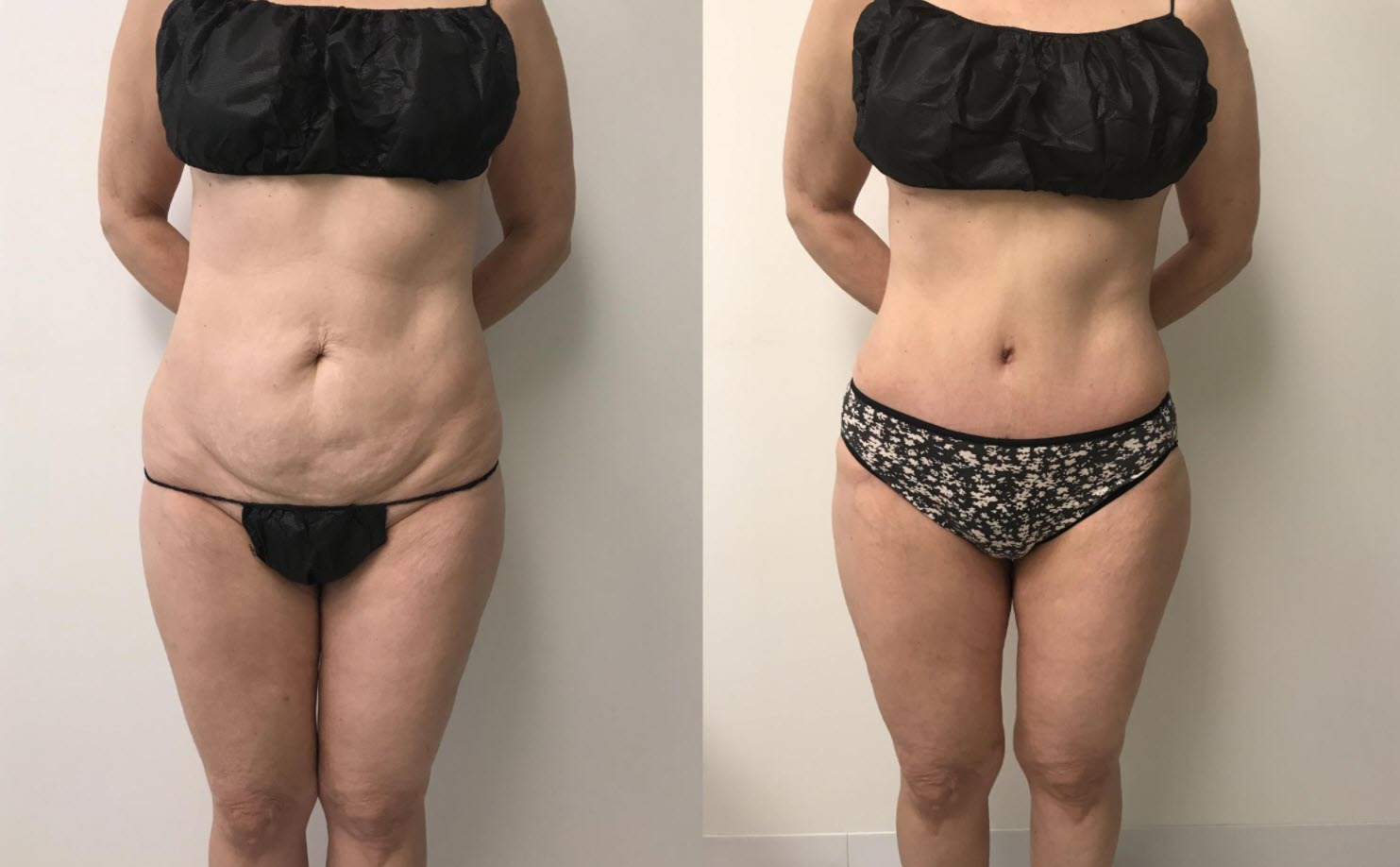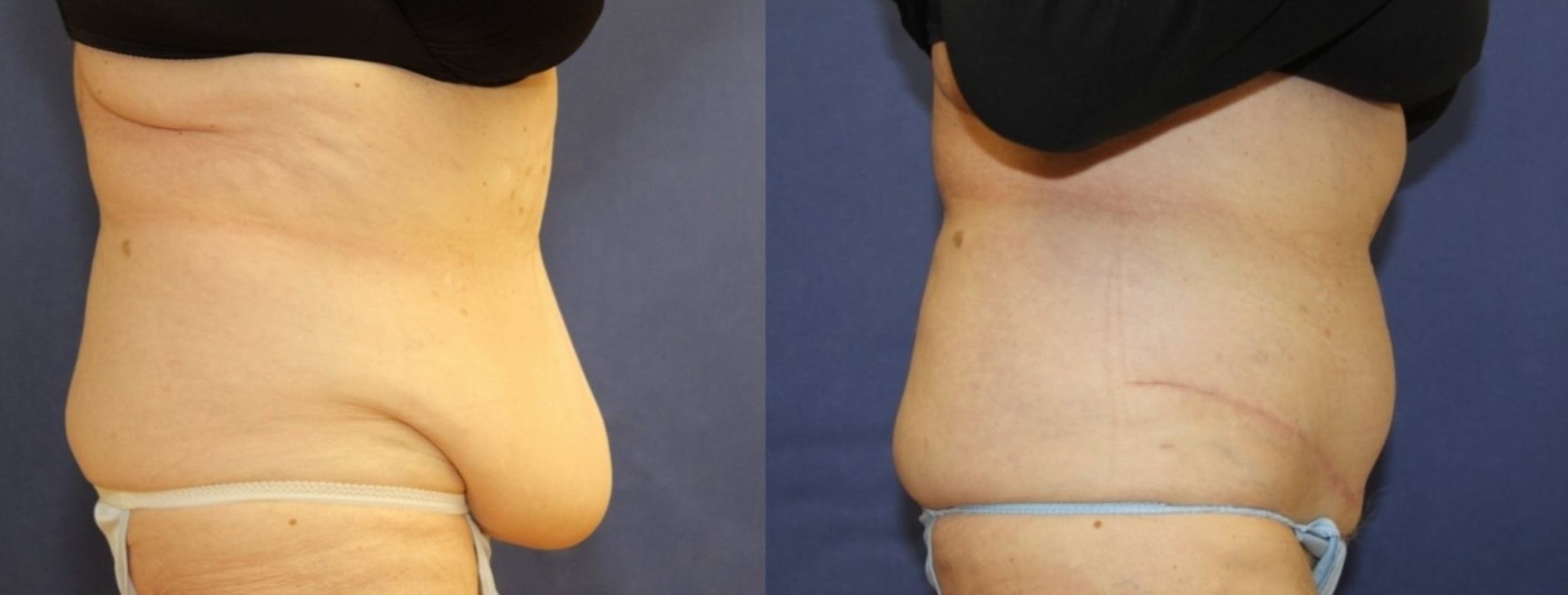Skin Removal Surgery Cost & Common Questions
Losing weight is an achievement. You look and feel better, and often your confidence rises.
If you lose a considerable amount of weight, however, you’re typically left with excess skin that bothers you both physically and mentally. Many weight loss patients are left with a significant “apron” of skin, called a pannus, hanging from below the belly button. For some, this causes chafing, mobility issues, and even infection.


A loose or sagging abdomen or excess skin in other areas of the body — arms, legs, butt — also can be caused by aging, hereditary, repeated weight changes, and pregnancy. That’s one of the reasons Americans spend almost $17 billion each year on cosmetic procedures, including those for body contouring.
If you’re considering skin removal surgery, there are a few criteria you should meet:
- You’ve reached your goal weight, and it’s been stable for at least six or more months.
- You’re in good health.
- You’re a non-smoker.
- You understand the risks and possible complications of the surgery.
- You’re prepared for a recovery time of up to eight weeks.
Curious about whether skin removal surgery is right for you? Below, we explore some common questions about skin removal surgery, including how much it costs and how the procedure works.
Jump to a Section:
- 2 Types of Skin Removal Surgeries
- Panniculectomy vs. Tummy Tuck
- How Much Does Skin Removal Surgery Cost?
- Excess Skin Removal Post-Weight Loss
- How Long Does Skin Removal Surgery Take?
- How Painful Is Skin Removal Surgery?
- What Is the Process Like?
- Will I Have Scars After Surgery?
- Is It Covered by My Insurance?
Two Most Popular Types of Skin Removal Surgery
Once you’ve decided to undergo surgery to remove excess or sagging skin, it’s important to decide which type of procedure you want. The two most common are tummy tucks and panniculectomies.
Tummy Tuck: Also called an abdominoplasty, this procedure is used for removing excess skin in the abdominal region. It’s one of the leading surgical cosmetic procedures for women in the U.S. The average recovery time for a tummy tuck is about four to six weeks.


Panniculectomy: A skin removal procedure that removes fat from underneath the skin of the torso, so there will be less hanging flesh after serious weight loss. This involves removing excess skin as well as loose or stretched-out skin tissue. It can take up to eight weeks to recover from a panniculectomy.


What’s the Difference Between a Tummy Tuck and a Panniculectomy?
These two procedures are commonly confused because they’re both essentially focused on the same area of the body. The biggest difference is the end result or goal of the surgery. A tummy tuck focuses on tightening the abdominal muscles at the same time removing excess fat and skin. Once the body has healed, you’ll find that you will have a smoother, more appealing look and feel to your abdomen area.
The goal of a panniculectomy is to remove the large flap of skin (pannus) that hangs over the abdomen and thighs of the patient. Unlike a tummy tuck, which is an elective procedure performed for cosmetic reasons, a panniculectomy is considered a medical necessity after a significant amount of weight loss.
You may be a candidate for a tummy tuck if you:
- Are trying to get rid of a “belly pooch” from a recent pregnancy
- Have trouble getting rid of excess skin around the abdomen despite diet and exercise
- Are in overall good health and are at a healthy weight
- Have talked to your surgeon, and he or she wants to perform this operation after a panniculectomy
You may be a candidate for a panniculectomy if you:
- Have recently lost a large amount of weight and have loose belly skin that you want to remove
- Are experiencing hygiene issues from excess skin hanging below the pubic region
- Keep getting ulcers, infections, and other related issues under the hanging skin
- Have recently had gastric bypass or another type of bariatric weight loss surgery
How Much Does Skin Removal Surgery Cost?
Just as tummy tucks and panniculectomy are different types of procedures, there are varying costs for each. A tummy tuck, which isn’t covered by medical insurance, averages $6,154, although that number often doesn’t include fees for anesthesia or operating room facilities.
Although a panniculectomy is more expensive, it’s sometimes covered at least in part by insurance. The cost of a panniculectomy ranges from $8,000 to $15,000, which may or may not include the surgeon’s fee, operating facility costs, charges for anesthesia, medical tests and prescription medications. Prices also vary depending on the type of skin removal surgery and the amount of skin, fat, and tissue that needs to be removed.
Skin removal surgery on other parts of the body has varying average costs. According to a 2020 study on plastic surgery statistics by the American Board of Plastic Surgery, the average costs of skin removal procedures on the following parts of the body in the United States are:
- Breast lift (Mastopexy): $5,012
- Buttock lift: $5,482
- Lower body lift: $7,924
- Thigh lift: $5,355
- Tummy tuck (Abdominoplasty): $6,154
- Upper arm lift: $4,861
The cost of skin removal in the United States is often based on the following factors:
- Level of expertise: An aesthetic plastic surgeon can charge more than general plastic surgeons or dermatologists.
- The degree of difficulty: Skin removal surgeries, such as those associated with liposuction, are cheaper than for those who need abdominal reconstruction, including individuals who lose weight from gastric bypass surgery.
- Skin grafts: The fee may increase if you need a skin graft, which is a surgical procedure in which a piece of skin is transplanted from one area to another.
Skin removal surgery cost also will depend on whether the patient has been through weight loss surgery or not. Patients who’ve had bariatric surgery tend to have more skin to remove, increasing the procedure time and, therefore, the cost.


Excess Skin Removal Surgery After Losing Weight
When a person’s weight fluctuates massively, such as after major weight loss due to bariatric surgery or a change in habits, the skin loses its elasticity. We get patients who are incredibly frustrated because, after all of their hard work on major weight loss, they feel they simply cannot get the body they deserve because of excess skin. Once your sagging skin has lost its capacity to shrink back to a smaller size and defined shape, there is little you can do on your own to remove excess skin. This is when skin removal surgery after extreme weight loss becomes necessary.
Skin removal surgery is not a single procedure, but rather a collection of body contouring surgery procedures designed to tone, define and contour different areas of the body. Some patients need a Lower Body Lift, which will tone your abdomen, buttocks, and thighs. You can also have an Upper Body Lift; an Upper Body Lift focuses on your breasts, back, and arms. Patients constantly get extra cosmetic surgery procedures such as a full tummy tuck surgery, a neck lift or even vaginal rejuvenation surgery. Once you schedule a body contouring consultation with one of our VIDA surgeons, you can talk about the areas of your body you’d like to improve and customize your body contouring procedures.
How Long Does Skin Removal Surgery Take?
Between 3 and 5 hours. After talking with your surgeon and deciding on the amount of sagging skin to be removed and the areas, your surgeon can give you an estimate of how long your surgery will be. For some patients it can be 3 hours, for some patients it can take up to 5 hours. All of the procedures are entirely personalized so the timing depends on many variables.
How Painful Is Excess Skin Removal Surgery?
Patients feel quite anxious when it comes to pain. Well, to ease your concerns, let’s start by giving you the great news: during the procedure itself, you won’t feel a thing. That’s right. Nothing. Nada. You will receive medications to keep you comfy, and depending on how much you’re having done, a combination of sedation with local anesthesia or general anesthesia will be used. Once the anesthesia effect wears off, you might be a bit uncomfortable, but that’s what brings us to the next point!
What’s the Skin Removal Surgery Process Like?
As a general rule, you should schedule at least two weeks off from work. Regardless of the procedures you end up having, during the first two weeks of recovery, you need to focus on healing. Take two weeks off from working out, lifting heavy objects, and any other vigorous activity that could jeopardize your recovery.
The first couple of days you might notice swelling, soreness, and bruising, but your surgeon will prescribe you pain medication to keep you comfortable. Keep up with resting, taking short walks around your house, drinking lots of water, and eating healthy. Doing so will speed up your recovery.
During recovery, if asked to wear a compression garment- do it! Post-surgery compression garments help support the body, keep you comfortable and protect the treated area.
Will I Have Scars After Skin Removal Surgery?
Scars are an inevitable part of having cosmetic surgery, but not all scars are the same. Depending on whether you focus on the upper or lower region of your body, incisions will be in a different location. VIDA surgeons plan your procedure strategically, including where to place incisions. The priority is to make them as invisible as possible, so you might be left with a scar on the lower part of your abdomen or your groin area, areas that can be hidden by underwear or regular swimsuits. If you combine this with good care of your incisions, such as not scratching them and avoiding direct sun exposure, they’ll fade considerably.
Is Body Contouring Surgery Covered by My Insurance?
Insurance companies can and will cover weight loss surgery but typically don’t cover cosmetic surgery (tummy tucks) to remove excess skin after significant weight loss.
The key word here is “cosmetic”. Since a panniculectomy is less cosmetic and more of a functional procedure, it is often covered by health insurance providers. Both procedures remove excess skin and fat from the abdominal area, however, a tummy tuck involves cosmetic contouring features like liposuction, tightening of ab muscles, etc.
Depending on your insurance coverage, skin removal surgery is typically an out-of-pocket service. However, in some cases, you may be covered under your company’s health plan coverage if the excess skin is causing health-related issues such as chronic skin infections from moisture trapped in folds of skin or other complications.
First Step: Consult a Plastic Surgeon
Before you make any appointments with your plastic surgeon to receive skin removal surgery, have a frank conversation about the procedure and the outcomes. Ask any questions you may have about the procedure, so you are well informed before the surgery. Some basic questions you should ask before you undergo skin surgery include:
- What skin removal procedure is best for me?
- How much weight do I need to lose to be a candidate for skin surgery?
- Will this skin removal improve my health and/or look better than the skin I currently have?
Your plastic surgeon should take the time to explain all your options and help you decide which skin removal procedure is right for you.
Our team of weight loss & skin removal specialists will be able to answer any questions or concerns you may have about any weight loss surgery and provide honest opinions as it relates to the recovery process after your specific procedure. Our surgeons are always up-to-date on the latest medical advances and deliver optimum results for each unique patient situation.